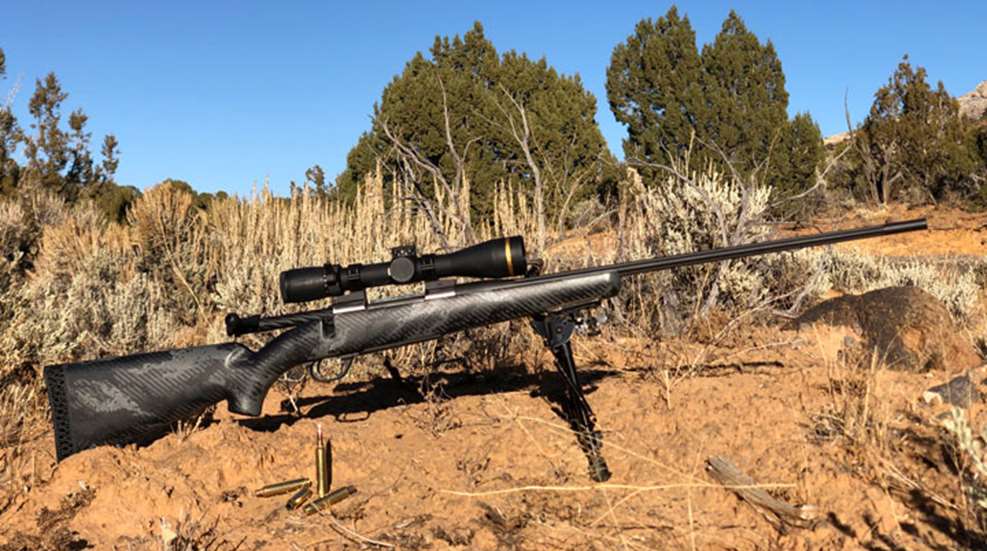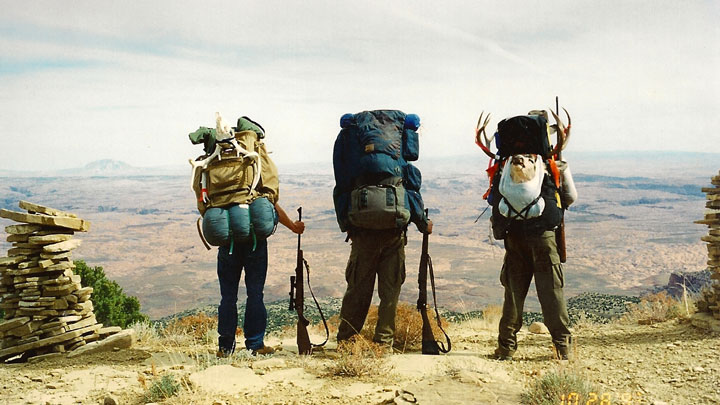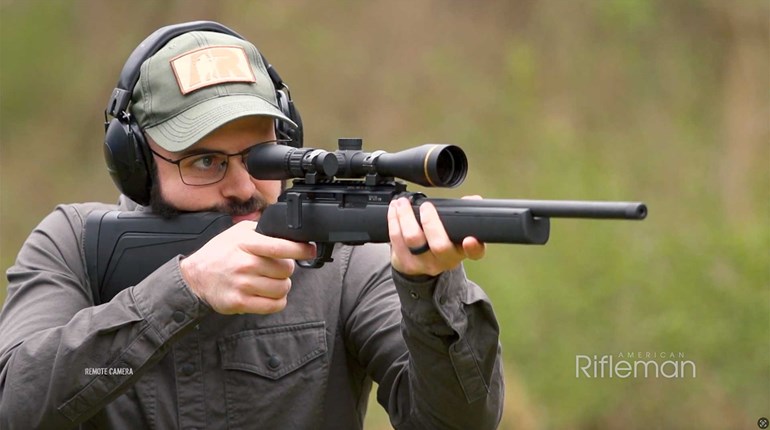
Recently I had a conversation with a young hunting enthusiast. I posed a question to him; “If you were capable of paying for either, would you choose to purchase a hunting rifle costing a few hundred dollars, or a hunting rifle that cost a few thousand dollars?”
His answer? “I’d buy the few-hundred dollar version, every time.”
He went on to say that he’d look for an older, high-quality used rifle. Since I’m familiar with his infatuation with pre-’64 Winchesters (an affinity I share) I knew where he was going with this.
I then asked “What if you were headed on a coastal Alaska hunt for Sitka Blacktail deer where you would be exposed to constant rainfall and salt sea air?” His eyes almost crossed at the mental sight of his beautiful old Winchester rusting away. We agreed that a stainless rifle in a composite stock would be a wiser choice, given the circumstances.
I then threatened his rifle with sub-zero conditions where an inexpensive composite stock (injection-molded) would be prone to shatter if accidentally banged against some inopportune rock or tree trunk. His eyes kind of got that deer in the headlights look.
Lastly, I’ll add this to our scenario: You’ve purchased a new rifle, scheduled a hunt for trophy Sitka deer on Kodiak Island, and have spent the better part of a week glassing for big bucks and dodging brown bears. Now, finally, you’ve spotted a monster buck. Problem is, he’s 482-yards distant across a canyon, and working slowly away and out of your life. There is no way you can close the distance for an easier shot. It’s a now or never opportunity on a world-class buck. To cleanly harvest him, you’ll need a rifle with which you can place an accurate, lethal shot on a smallish target at extended distance.
Now, considering all the above criteria, I’ll ask you the same question:
Would you buy a cheap hunting rifle, or an expensive one?

Cheap Facts and Expensive Realities
It’s a simple fact that most of us, myself included, will never NEED a multi-thousand dollar rifle. For less than a quarter of that amount we can buy a rifle capable of completing 85 percent of whatever tasks we throw at it.
It is, however, also a reality that if you like hard-core hunting adventures, a cheap rifle won’t cut the mustard. Why not? Well, let’s take a close look at the differences between, say, a $450 dollar rifle and a $2,250 dollar rifle.

The Lowdown on Cheap Rifles
Candidly, manufacturers can’t invest much money and time to build an inexpensive rifle. Barrels, actions, and stocks have to click off the line like so many Cheetos, and snap together like a lid onto a service-station cup. What about the trigger? It must be as cheap to produce as a plastic fork-and-spoon set, and will be just as refined. Funny thing is, though, plastic tableware works okay, service-station cups do the job, and Cheetos taste great. They’ll get the job done. However, plastic-ware is not suitable for cutting and serving a fine steak, service-station cups don’t last long, and Cheetos sure don’t add to your health and vigor. In similar fashion, cheap barrels don’t generally shoot awesome, cheap actions aren’t as smooth and reliable, and cheap stocks are inconsistent and can fail under adverse conditions. A cheap trigger will drive a saint to strong drink.
But can you kill big game with an inexpensive, cookie-cutter rifle? You bet you can. If you hunt whitetail deer from box blinds at distances of 200 yards and less, an inexpensive rifle will do everything you’ll ever need. You can even hunt elk in the Rockies, pronghorn on the plains, and mule deer in the sage with such a rifle. It’ll work just fine, most of the time.
Unfortunately, the things that make a rifle inexpensive to produce and affordable to buy are the same things that render it unsuitable for hardcore hunting adventures. In terrible weather the cheap finish will rust away before your eyes. The mass-produced action may let you down when a grizzly bear considers adding you to his menu. And the plastic stock can shatter in extreme cold or interfere with accuracy in extremely hot weather. The rifle likely won’t provide consistently great accuracy when exposed to adverse weather, hard backcountry living, and accumulated bumps and bruises.
That is why, my friend, a cheap rifle won’t cut the mustard for hardcore, wilderness-type hunting.

The Upshot on Upscale Rifles
In rifles, as in every other aspect of life, the old adage “You get what you pay for” holds true. To continue our culinary comparison here, when you fork over a couple grand on a hunting rifle you’re getting the equivalent of a beautiful steak that’s been grilled to perfection. A sharp knife and a polished stainless steel fork peek from their wrapping in a fresh cloth napkin. And the beverage of your choice is served in nice crystal (or a sturdy tin cup alongside a smoky campfire; your preference). You get the picture.
Expensive rifles generally feature high-quality stainless barreled actions. The metalwork throughout is often coated with an abrasion- and corrosion-resistant finish. The action has been methodically milled to high tolerances, creating a smooth and reliable system. And the bore was carefully cut and perhaps hand-lapped to provide superior accuracy. A top-end trigger assembly is meticulously tuned and attached. The assembly is then fit into a composite stock made of hand-laid fiberglass, carbon, or aramid fibers and epoxy. From the recoil pad to the muzzle, materials and craftsmanship are all high quality.
Can you kill something deader with this rifle than you can with a cheap rifle? No. But you may succeed in making meat with this rifle in cases where you might fail with the cheap edition. It will be more accurate, more reliable, tougher, and more forgiving to shoot. The composite stock is very durable and not susceptible to changes in temperature or humidity. The metalwork and bore will be weather resistant and slow to corrode. The action will be smooth and reliable. And the trigger will make a saint of you.

What Will You Buy?
In the end, the choice is up to you. If you have no plans nor desire to hunt hardcore, then an inexpensive rifle will work perfectly. Keep it clean, don’t take real long shots or hunt grizzly bears, and it’ll serve you well for years. For great cheap rifles check out the T/C Venture II, the Mossberg Patriot, and Winchester’s XPR models. They will reduce the thickness of your wallet to the tune of $450 - $700.
If, on the other hand, you’re one of those hardcore hunters that dreams of backpack hunting mule deer where the saw-tooth peaks cut the sky, pursuing caribou in the arctic circle, or horsepacking for late-season elk in Montana’s Rocky mountains, consider saving up for an expensive rifle. Three of my favorites are Browning’s X-Bolt Pro, Kimber’s Mountain Ascent, and Weatherby’s Backcountry. All can be purchased for between $2,000 and $2,500.

Author’s Note: Old “inexpensive” rifles can be very interesting. Back before stainless steel and composite stocks were ever used in rifle building, manufacturers built some great rifles. They hand-tuned the actions, hand polished their barrels, and finished them with a deep, rust-resistant bluing. They attached good triggers. They fit the barreled actions into good walnut stocks. These rifles were and still are awesome, though not incredibly accurate by today’s standards. Eventually, legal liability forced manufacturers to reduce their trigger assemblies to something that required vice-grip pliers to touch the thing off. Metallurgy and manufacturing standards fell off. “Value” rifles became the mass-produced things we’re familiar with today.
My point is this: if you can find an old Winchester Model 70 or Remington 700, you’ll likely be able to purchase it for $1000 or less. It will not shoot with today’s high-end rifles, nor will it be as weather and temperature resistant. But it will be a great hunting rifle.
Want to read more from Aram von Benedikt? Check out the following articles:
• How to Build the Ultimate Brown Bear Rifle
• Top 7 Long-Range Hunting Loads
• Hardcore Hunting: 5 Tips for Keeping Your Rifle Functioning
• Public Land Hunting Etiquette
• Journal This Year: How to Record Recent Adventures and Plan Upcoming Ones
• Backcountry Survival: 3 Tools You Should Always Carry
• .30-06 Springfield: Is it Still the Best All-Around Big-Game Hunting Cartridge?
• 10 Great Christmas Gifts for Hunters
• How to Field Judge a Mule Deer in 30 Seconds
• How to Call Elk: Strategy, Sequence and Setup
• How to Set Up a Ground Blind for Bowhunting
• Backcountry Mule Deer Hunting: Tools and Tactics
• Tips and Tactics for Hunting the West
• How to Prep for Elk Hunting: Physical Fitness, Mental Toughness, Shooting Skills and Shot Placement
• Hunting African Plains Game: How and Where to Place Your Shot
• Dream Hunt: How to Make an African Safari Come True
• Top 5 Backcountry Hunting Rifles
• Hunting Cartridges: Rising Starts of the New Millennium
• Tips and Tactics for DIY Hunting and Fishing in Hawaii
• Peccary Quest: Where and How to Hunt Javelina
• Tips and Tactics for Hunting Western Cottontails
• How to Convince Your Wife to Let You Buy as Many Guns as You Want
• Backcountry Survival Tips: How to Deal with Disaster
• DIY Backcountry Hunting Tactics and Gear
• How to Be an Ethical Long-Range Hunter
• Tips and Tactics for Hunting Coues Deer
• Essential Stalking and Still-Hunting Skills
• A Beginner's Guide to Traditional Bowhunting
• 6.5 Creedmoor Proven: How Does It Actually Perform on Big Game?
• How Hunting Rifles & Gear Have Evolved Over the Last 50 Years
• How to Sharpen a Knife
• How to Set Up Your Rifle and Scope for Long-Range Dialing
• 7 Common Predator Hunting Mistakes to Avoid
• 6 Tips for Hunting Public-Land Mule Deer
• 10 Tips for Bowhunting Elk
• Tips and Tactics for Bowhunting Mule Deer
• How Do You Build the Ultimate Western Big-Game Rifle?
• 10 Ways to Prep for Your Next Western Big-Game Hunt
• Tips and Tactics for Hunting Canyon-Country Gobblers
• 12 Tips for Shed Hunting the West





































